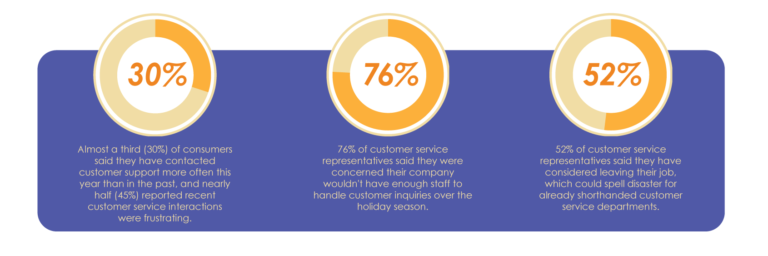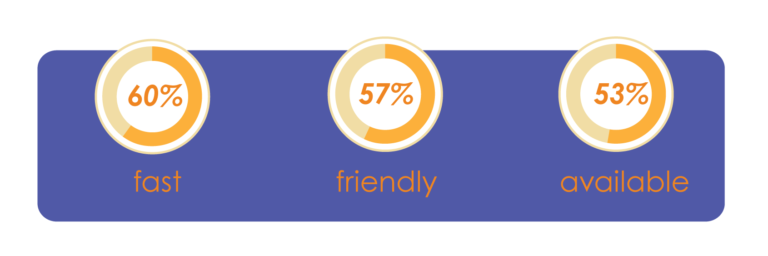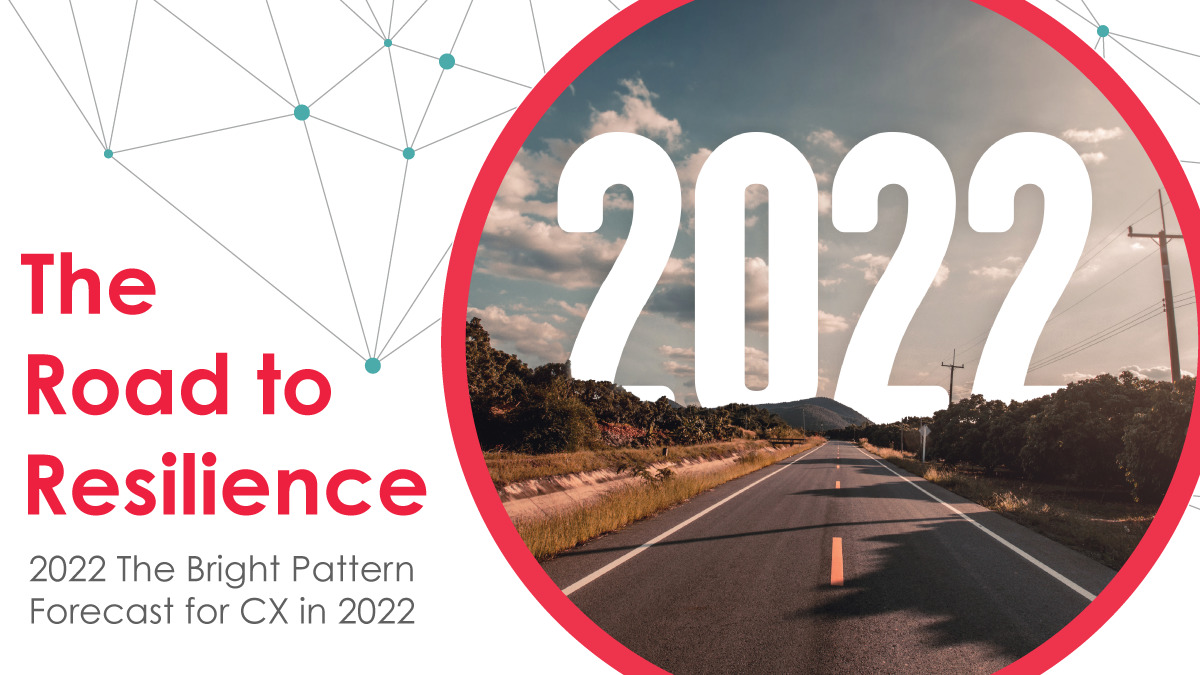When we published our outlook for 2021, we optimistically called it “The ABCs of Post Pandemic Contact Center”. After 2020, and with vaccines being introduced, we looked forward to a return to some normality. But if there’s one thing 2021 has taught us all, it is that normal doesn’t look quite the same as we remember it.
So in what kind of a world are we living in 2022 and beyond? And how can we make the changes necessary to thrive in the “new normal”?
Unlike the previous couple of years, there is not one, but several drivers of change affecting CX. We are still living in and dealing with the pandemic, that’s for sure. According to the experts, the Corona Virus is unlikely to disappear. We can pull from thousands of quotes from doctors, but this one from the New York Times on November 16th, 2021 summarizes the situation succinctly:
“No one is trying to eradicate Covid from the planet, that’s not the goal right now. Instead, we’re trying to remove it from being a guiding force in our lives.”

It is expected that Covid will move from pandemic to endemic in large parts of the US in 2022. It will still be here, but we will finally be able to say the pandemic is over for a lot of us. Then we can finally say the Post Pandemic Contact Center is here.
But wait, didn’t we say there is more than just Covid affecting the world of CX? Yes, we did. And the reality is that we are going to have to shift our focus toward tackling new challenges in 2022.
Like an 80s Flashback, Inflation is Here Again
The first challenge is inflation. Not a word we’ve used much since the 80s. But it’s back and very much on the mind of consumers. So how does inflation affect CX and how can we best address it? For much of the past decade, we’ve argued that the customer experience is more important than price when it comes to differentiating brands. At Bright Pattern, we still believe that is true and will be the trend moving forward. However, inflation does put prices back into consideration for shoppers.
Customer experience will become even more important because of inflation. When people pay more, they expect more.

The contact center will have to adapt to offer even better service for people who have seen jumps in prices, and fewer and fewer deals. We believe the current inflationary spikes will be temporary, but customer expectations will not be. The service levels will have to be maintained even when prices come back to normal. Another thing to consider is that inflation is not affecting all parts of the economy the same. We’ve seen huge rises for big-ticket items like cars and trucks, and people are noticing their grocery bills gradually creeping up. Areas and vertices most affected will have to make drastic changes if they are going to emerge successfully.
For instance, a lot of very vocal, yet valuable public sentiment is being expressed on social media regarding the prices and availability of automobiles. Smart manufacturers and retailers will be reacting to this outpour and directing customers to immediate solutions to their problems. They will be initiating contact and conversations instead of sitting back and waiting for the customer to find them. Helping the customer presale will be the new normal for this space.
Suddenly We’re All Supply Chain Experts
The second major driver we see for 2022 is the ongoing supply chain issues facing nearly all industries. Ensuring an efficient supply chain is one of the most effective ways to keep customers happy. But as we’ve seen, the 2021 supply chain has been anything but efficient. On top of the pandemic, we’ve seen a blocked Suez Canal, skyrocketing transportation costs, chip shortages, and a lack of delivery personnel. Supply chain processes can no longer be relied on to deliver on the brand promise, and this has led to an exponential rise in call volumes at customer service centers, complicating the role of the customer service agents.
Wakefield Research conducted a survey of 1,000 U.S. consumers and 500 U.S. customer service workers between November 19 and November 30, 2021. They found supply chain issues affected all parts of the contact center and created a chain reaction:
- Almost a third (30%) of consumers said they have contacted customer support more often this year than in the past, and nearly half (45%) reported recent customer service interactions were frustrating.
- 76% of customer service representatives said they are concerned their company doesn’t have enough staff to handle customer inquiries this holiday.
- 52% of customer service representatives said they have considered leaving their job, which could spell disaster for already shorthanded customer service departments.

Having customers stressed out because of supply chain issues leads to higher burnout rates in employees. But customers are also demanding a better experience because of the supply chain issue:
- In addition to knowing about supply and delivery issues in advance, shoppers wanted fast customer service(60%), friendly (57%), and available when they need it (53%).

Customer service in this situation is being asked to do more with less. The solution here is to offer substantially more accurate and timely information to the agents, provide customers with better tools to help alleviate their stress, and to up the game for human-to-human communication as a whole.
Hello, Is There Anyone There?
Supply chain issues are exacerbated by our final industry driver for 2022: The “Great Resignation”. This is the biggest upheaval in the labor market in living memory. The pandemic has caused many people to experience burnout. They have switched to remote work and never want to go back, and their priorities have reset since 2020. In the customer service and contact center industry, this phenomenon could take a bad problem and make it worse.
Agents are on the front lines of preserving customer relationships on behalf of the world’s leading businesses, yet they face high turnover. According to a 2021 report from Gartner, “Why Service Reps Disengage and What You Can Do About It,” 38% of the 600 reps surveyed are disengaged, and those reps are “84% more likely to think of quitting or be actively looking for a new job.”
In another study, “Health of the Contact Center 2021: Agent Wellbeing and the Great Resignation”, agents were asked what they wanted. The results paint a challenging picture for contact center managers moving forward.
- Agents are being squeezed by more calls, more channels, and more complexity. They’re being asked to manage 7.2 more calls per day (and a similar amount of non-call interactions) while trying to find some semblance of work/life balance.
- Supporting career growth is critical to agent satisfaction. They want frequent and personalized training and it has to be flexible enough to fit within daily work schedules.
- Eighty-three percent of agents in the study cited a lack of data and/or appropriate tech tools as the largest barrier to resolving customer issues.
- Agents that have access to modern, cloud-based omnichannel technologies found greater success in managing those issues, and they ultimately felt more connected to the business in the process.
Great customer experiences do not happen without great employee experiences. To beat the “Great Resignation” and the traditionally high turnover we experience in the industry, CX leaders must put the technologies and strategies in place to help agents succeed. This is still the best way to retain staff and attract the great people needed to deliver a stand-out CX.




